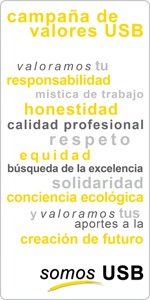Sartenejas Campus
In early 1967 in the governmental instances came the idea to create a new university, in order to help to solve the existing universitary problem at the time. Thus on May 15, 1967 the Commission was established, which would make the study and report on the establishment of a Centre for Higher Education in those branches of learning that suit the economic and social development of the country.
Two months later, on July 18, 1967, Dr. Raul Leoni, President of the Republic signed the No. 878 decree, whereby established the University as Experimental Institute of Higher Education under the name of University of Caracas, intended to institute scientific, technological and humanistic research and studies requiring by the country at that time.
On December 30, 1968, were named the first authorities rectories: Eloy Martinez Lares, as the Chancellor and Francisco Kerdel Vegas and Miguel Angel Perez, as the Vice-Chancellor and Secretary, respectively.
On July 9, 1969, No. 94 decree, renamed as Experimental Simón Bolívar University.
Days later, on July 15, the new authorities had names: Ernesto Mayz Vallenilla, Francisco Kerdel Vegas and Federico Rivero Palacios, as Chancellor, Academic Vice-Chancellor and Provost Administrative Vice-Chancellor.
On January 19, 1970, with the attendance of the President, Dr. Rafael Caldera, solemnly and officially opened the National Experimental University Simon Bolivar in the old Sartenejas ranch located in the valley of the same name. Ever since that date the anniversary is commemorated each year with the start of uesebistan teachers activities.
Source:Center for Documentation and Archives. CENDA.
Litoral Campus
In October 1969, start the idea for the creation of a university for the Central Coast. Determined to make a survey to the university authorities, for it was obtained an appointment with Dr. Ernesto Mayz Vallenilla, Chancellor of USB at that time, a commission went to Sartenejas when was concluing the buildings for its inauguration. This meeting coincided with the presence in Venezuela of a French government commission, chaired by the Minister of the rector of the Paris Academy for technological education and director of the Institute of Technology, who came with the intention to create a body similar in Venezuela. This visit would be incentive enough for Dr. Mayz Vallenilla and Kesdel Vegas (Chancellor and Vice-Chancellor) support the initiative of creating a new campus of the USB. Consolidated the idea, it began the seeking a suitable land in the municipality or the nation/country to implement this project immediately.
This raised mid-November 1973 a interview with Dr. Rafael Caldera President of the Republic (June 18, 1973), who manifests very pleased with the initiative. During the government convention in the capital region it´s signed the contract record between the Ministry of Education and the Simon Bolivar University for the Vargas university college Deptartment. Appears Camurí Grande Valley with 112 acres of land crossed by two rivers, abundant vegetation, according to the authorities of the USB "the ideal place". Mayz Vallenilla and Francisco Buruceaga (bishop) they have an interview with the president, occurs No 704 Decree which raises the expropriation of the property (January 14 , 1975).
On July 27 of that year it´s made a definitive expropriation agreement which it´s sent to the national executive at last on August 11, the President signed the document that orders the public works minister the consolidation of No 704 Decree.
In September 15 is made formal take in of Camuri Plantation. On January 16, 1976 the C.N.U. approves the report creation N.U.L. depending on the U.S.B. On February 12, 1977 came into operation corresponding to its rules.
In what was the Camuri Plantation, today expands Simon Bolivar University campus in the Coast, is a place that invites meditation, study, reflection deep with the environment of nature in all its splendor, today there are the new generation of young Venezuelans.
The campus is directed to provide the needs expressed by the community to have an University extension for channeling to the region the actions and provide training opportunities at higher levels in fields that are oriented towards the development of the region while of Venezuela.
Source:
- Luis Oscar Martinez, Chronicler of the Guaira. The story of a long struggle.
- Mrs Emilia-Troconis of Veracoechea. Land tenure in the Central Coast.
- Arcila Farias. Indian heritage.

